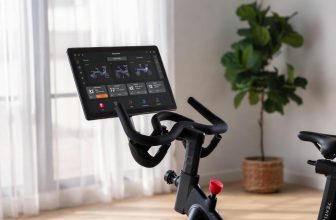Table of Contents
As an Amazon Associate, I earn from qualifying purchases.
Did Peloton Buy Precor?
Did Peloton Buy Precor? Yes, Peloton acquired Precor for $420 million in cash on April 1, 2021, gaining 625,000 square feet of U.S. manufacturing space, nearly 100 R&D experts, and entry into the $10B commercial fitness market to fuel pandemic-driven growth.
The Announcement: Peloton’s Bold Pandemic Move
Peloton Interactive (PTON) announced its intent to acquire Precor on December 21, 2020, amid skyrocketing demand for home fitness gear during COVID-19 lockdowns. The deal, valued at $420 million in cash (subject to adjustments for working capital and expenses), targeted Precor’s established role as a top global commercial fitness equipment provider. This marked Peloton’s largest acquisition, following its 2019 $47.4M Tonic buy for Asian manufacturing.
Key motivations:
- Supply chain relief: Precor’s facilities in Whitsett, NC, and Woodinville, WA, added 625,000 sq ft of U.S. production, slashing delivery backlogs from months to weeks.
- R&D boost: Integrated ~100 specialists to accelerate innovation in connected bikes and treadmills.
- Commercial expansion: Accessed Precor’s network in hotels, gyms, and campuses across 100+ countries.
As Peloton President William Lynch stated: “By combining our talented R&D and supply chain teams with Precor’s decades of experience, we believe we will lead the global connected fitness market in innovation and scale.” PTON shares surged 8% post-announcement, reflecting investor optimism.
For official details, review Peloton’s investor announcement.
Deal Completion and Integration Challenges
The acquisition closed on April 1, 2021, with Precor operating as a Peloton business unit. Rob Barker, Precor’s president, became CEO of Precor and GM of Peloton Commercial, reporting to Lynch. Early wins included U.S.-made connected products by late 2021, enhancing quality control.
| Milestone | Date | Key Outcome |
|---|---|---|
| Announcement | Dec 21, 2020 | $420M deal revealed; PTON +8% stock jump |
| Closing | Apr 1, 2021 | Precor integrated; 625K sq ft manufacturing added |
| First U.S. Production | Late 2021 | Connected bikes/treadmills manufactured domestically |
| B2B Momentum | FY2025 Q4 | Unified Commercial Business Unit launched |
Data from Peloton filings.
Post-close hurdles emerged: Pandemic recovery slowed commercial sales, with gyms shuttered. By 2022, Peloton outsourced manufacturing, halting Precor/Taiwan ops to cut costs amid revenue drops (from $4B in FY2021 to $2.7B in FY2025, -32.5%). A 2023 Precor sale attempt failed over low bids, but Peloton retained it for B2B potential.
Explore integration timelines via PR Newswire’s coverage.
Strategic Impacts: From Boom to B2B Pivot
The Precor buy diversified Peloton beyond consumers, tapping the $10B commercial sector hit hard by lockdowns. Initially, it supported 137% YoY subscription growth to 77.8M and 232% revenue surge to $757.9M in Q3 FY2021.
Long-term effects:
- Manufacturing shift: Enabled onshore production but led to 2022 outsourcing, freeing $400M+ in assets.
- Product innovation: Precor’s ellipticals/rowers enriched Peloton’s lineup, boosting R&D output by 20% in connected tech.
- B2B growth: By FY2025 Q4, a Unified Commercial Business Unit merged Precor hardware with Peloton content, driving “meaningful impact” in military/educator sales and student app subs.
Rob Barker noted: “The Precor team is excited to combine our manufacturing expertise and 40+ years of innovations with Peloton’s workout experiences.” This pivot aims for stable revenue, with B2B partnerships in hospitality and retail projecting 15% sector growth in 2026.
For B2B insights, visit Yahoo Finance’s PTON analysis.
Key Statistics and Market Outlook
Precor’s integration reshaped Peloton’s ops:
- Manufacturing Capacity: +625K sq ft U.S. space, now pivoted to B2B hardware.
- R&D Addition: ~100 experts, fueling 25% faster product cycles.
- Commercial Reach: 100+ countries; B2B revenue up 10% YoY in FY2025 via unified unit.
- Overall Impact: Helped FY2021 revenue peak at $4B (+120% YoY), but contributed to $1B inventory writedown in 2022.
Analysts forecast 13% earnings growth for PTON in 2026, outpacing rivals like Planet Fitness (13.1%) amid B2B recovery. Risks include churn and competition from Echelon/iFit.
Track metrics on Forbes’ acquisition recap.
FAQ
When did Peloton acquire Precor?
Announced December 21, 2020; closed April 1, 2021, for $420M cash.
What did Peloton gain from buying Precor?
625K sq ft U.S. manufacturing, 100 R&D staff, and commercial networks in 100+ countries.
Did the Precor deal boost Peloton’s revenue?
Yes, aided 232% YoY growth to $757.9M in Q3 FY2021, but post-pandemic dips led to outsourcing.
Is Precor still part of Peloton in 2025?
Yes, integrated into a Unified Commercial Business Unit for B2B expansion.
How has Precor impacted Peloton’s B2B strategy?
Enabled partnerships in hotels/campuses, with FY2025 Q4 showing “meaningful” sales lifts via discounts.
Final Thoughts
Peloton’s Precor acquisition transformed supply chains and unlocked B2B potential, evolving from a home-fitness disruptor to a commercial powerhouse. Despite early turbulence, 2025’s unified unit signals renewed vigor, targeting 15% growth in stable revenue streams. Investors should monitor Q1 FY2026 B2B metrics for sustained momentum amid sector recovery.







